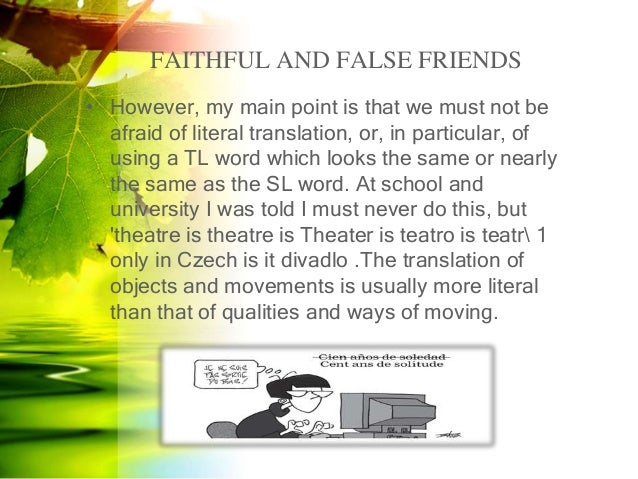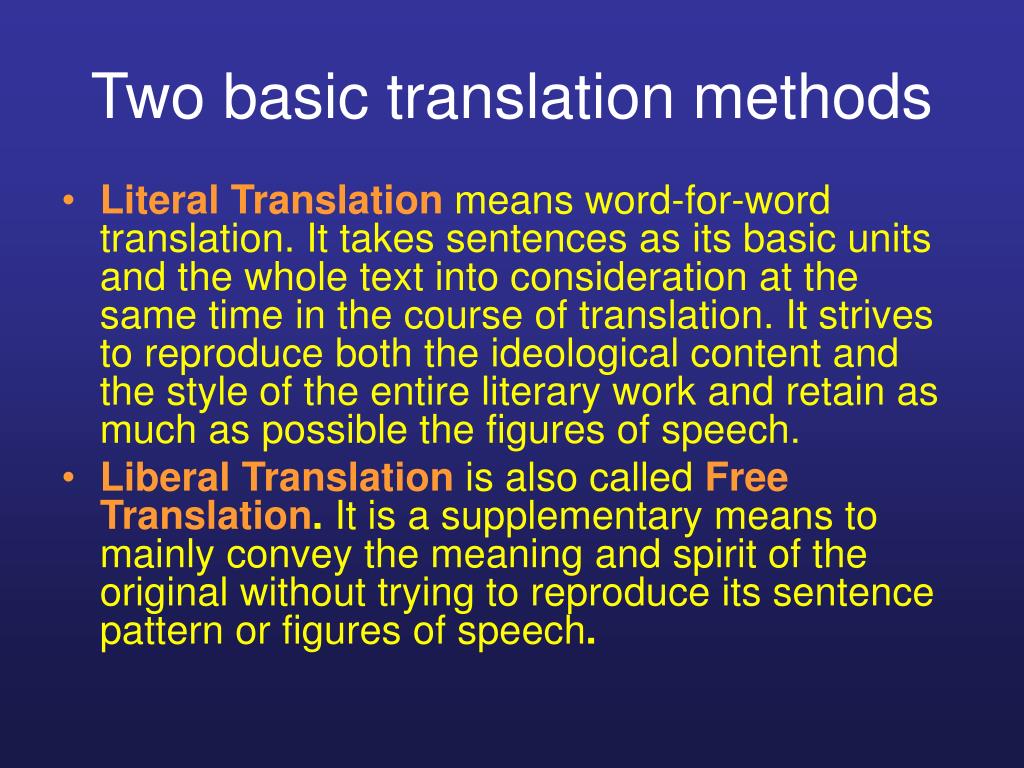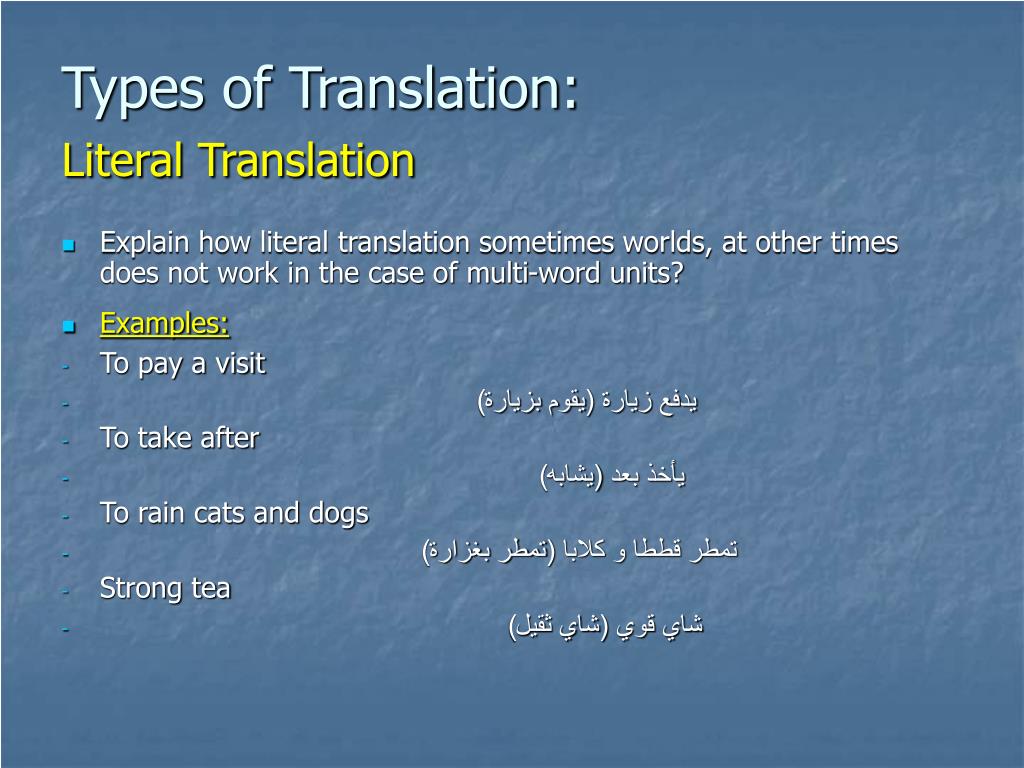


In 1981, Peter Newmark referred to translation as either semantic (word-for-word) or communicative (sense-for-sense). In dynamic equivalence, there is less concern with matching the message in the target language with the message in the source language the goal is to produce the same relationship between target text and target audience as there was with the original source text and its audience. Formal equivalence is when there is focus on the message itself (in both form and content) the message in the target language should match the message in the source language as closely as possible. In 1964, Eugene Nida described translation as having two different types of equivalence: formal and dynamic equivalence.

Imitation is the use of either metaphrase or paraphrase but the translator has the liberty to choose which is appropriate and how the message will be conveyed. Paraphrase is sense-for-sense translation where the message of the author is kept but his words are not so strictly followed as his sense, which too can be altered or amplified. Metaphrase is word-for-word and line by line translation from one language into another. John Dryden proposed dividing translation into three parts called: metaphrase, paraphrase and imitation. It fundamentally means translating the meaning of each whole sentence before moving on to the next, and stands in normative opposition to word-for-word translation (also known as literal translation). Sense-for-sense translation is the oldest norm for translating.


 0 kommentar(er)
0 kommentar(er)
